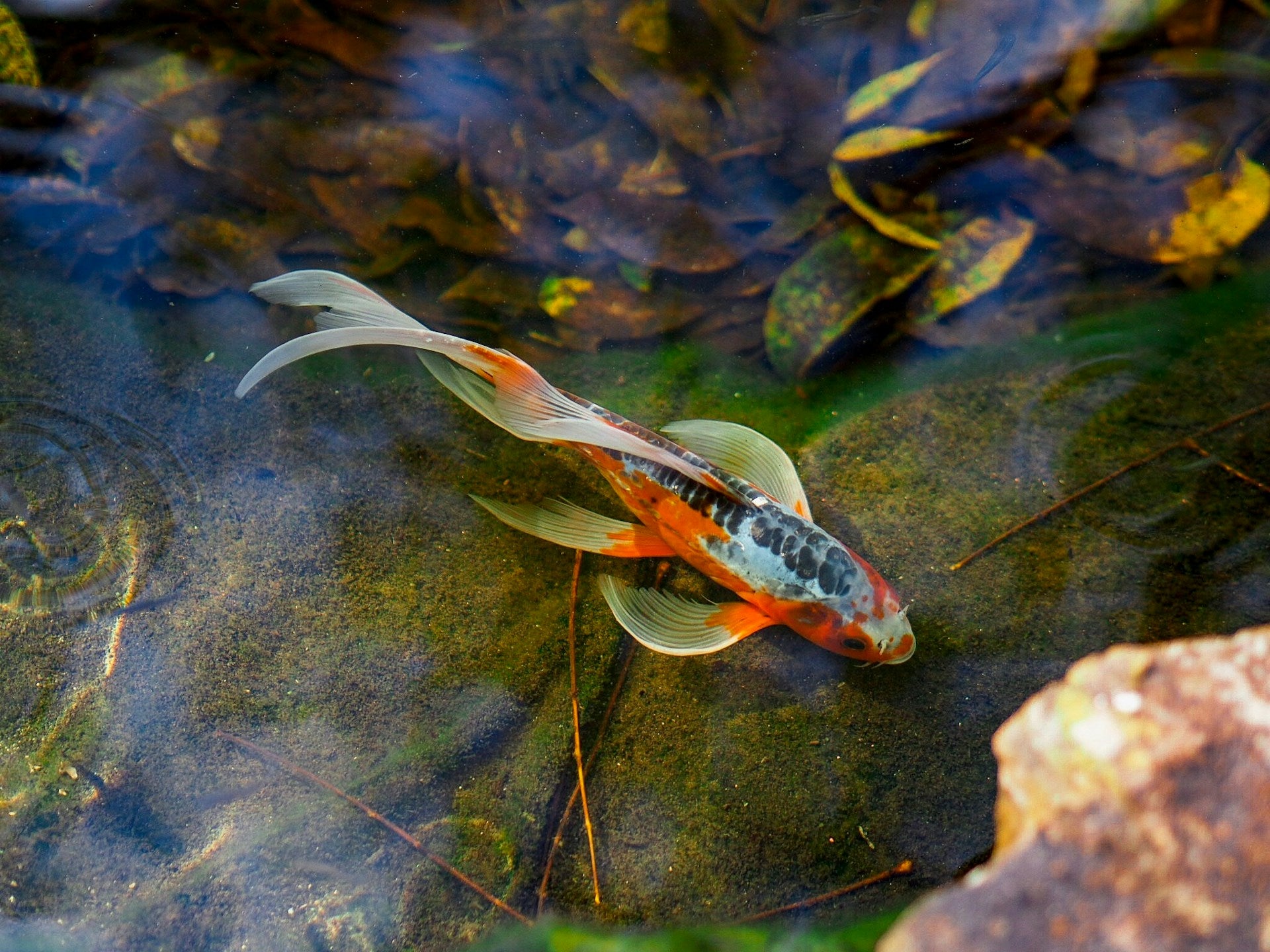Koi, often referred to as "living jewels" due to their vibrant colours and mesmerising patterns, have captured the hearts of pond enthusiasts around the world. As we move into 2024, the allure of koi keeping continues to grow, representing a deep-rooted connection with an ancient Japanese art form and an appreciation for the tranquil beauty these fish bring to our ponds. However, creating a thriving environment for koi fish involves more than just appreciating their aesthetics; it requires a comprehensive understanding of their specific needs and meticulous pond care.
In this definitive guide, we will explore the fundamental principles of koi care, delving into crucial aspects such as water quality, nutrition, pond design, and healthcare. Armed with expert tips, best practices, and the most recent developments in koi care, our objective is to empower you with the knowledge necessary to provide the best possible environment for your koi, ensuring their health, happiness and longevity.
Water Quality: The Foundation of Koi Health
Establishing and maintaining pristine water quality is paramount to the health and well-being of your koi. As koi are sensitive to water fluctuations, it's crucial to ensure a stable environment with optimal chemical parameters. Here are some essential aspects of water quality to consider:
- Filtration: Implement a reliable and efficient filtration system, such as biological and mechanical filters, to eliminate harmful waste, toxins, and particulates from your pond. This will help maintain water clarity and promote a healthy environment for your koi to thrive.
- Aeration: Adequate oxygenation of your pond is crucial for koi respiration and overall health. Invest in an air pump or fountain to ensure proper circulation and oxygen levels, creating a dynamic and well-oxygenated environment.
- Water Testing: Regularly test and monitor water parameters, such as ammonia, nitrite, nitrate, pH and temperature. Swiftly address any imbalances to ensure consistent water quality for your koi's robust health.
By prioritising water quality, you create a solid foundation for your koi to flourish and prevent various issues related to poor water conditions, stress and disease.
Nutrition: Feeding Your Koi for Optimal Growth and Health
Providing proper nutrition plays a vital role in koi health and growth. Balanced, high-quality koi food will ensure they receive the essential nutrients required for a vibrant and long-lasting life. Consider these important factors when feeding your koi:
- Food Quality: Opt for premium koi pellets, rich in proteins and essential vitamins, to promote robust growth, vivid colours and good health.
- Feeding Frequency and Quantity: Tailor your feeding schedule according to the season and water temperature, as koi tend to be more active during warmer months. Adjust portion sizes based on the age, size and activity level of your koi.
- Supplemental Treats: Offer occasional treats, such as insects, fruits, or vegetables to diversify your koi's diet and provide additional enrichment.
Remember that overfeeding can lead to poor water quality and obesity issues in koi. Therefore, it’s crucial to find the right balance in feeding to maintain a healthy pond environment.
Pond Design: Creating a Safe and Comfortable Habitat
The design of your koi pond will significantly impact their well-being and overall satisfaction. Consider incorporating these elements to create a well-rounded, attractive habitat for your koi:
- Adequate Space: Koi requires ample space for comfortable swimming, so ensure your pond offers a suitable volume depending on the number of fish and their potential adult size. Planning for crowd control will also help maintain water quality and reduce stress amongst your fish.
- Depth and Shelter: Provide varying depths and shaded areas within your pond, allowing koi to escape harsh sunlight, predators, and temperature fluctuations during different seasons.
- Aquatic Plants: Adding aquatic plants not only serves an aesthetic purpose but also aids in oxygenation, filtration, and provision of natural hiding spaces for koi.
By thoughtfully designing your koi pond, you can provide the best possible environment for your koi to thrive and display their natural behaviours.
Healthcare: Preventing and Managing Koi Ailments
Despite your best efforts in creating a flourishing pond environment, koi may still fall victim to various ailments. It's crucial to identify signs of illness early and address them effectively. Consider these healthcare tips for your koi:
- Quarantine New Fish: Before introducing new koi to your pond, place them in a separate quarantine tank for at least two weeks to assess their health condition and prevent the spread of diseases.
- Regular Health Checks: Regularly assess your koi for any signs of stress, physical abnormalities, or behavioural changes, and address these issues as soon as possible.
- Treatment and Medications: Keep relevant medications and treatments at hand to promptly alleviate any detected health issues, such as parasitic infections or fungal diseases.
Vigilance in koi healthcare will allow you to detect and resolve issues before they become critical, ensuring the well-being and longevity of your beloved koi.
Cultivating an Enchanting Koi Pond in 2024
Investing time, effort, and passion into koi care will reward you with a uniquely captivating pond teeming with these magnificent fish. By following the principles outlined in this guide, you can confidently create a thriving koi haven that delights the senses and provides a sanctuary for both the fish and you.
If you're seeking expert advice, high-quality products, and support for your koi fish journey, look no further than Perfect Aquatics. As one of the UK's largest koi shops and aquatics specialists, we are eager to help you create an enchanting koi pond that exceeds your expectations in 2024.

